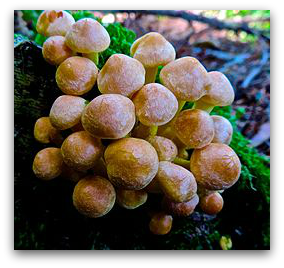
Image: Peter Stevens
Wild mushrooms have recently made a surprising (but not unwelcome) foray into the battery realm.
In a new study, researchers from Purdue University derived promising carbon fibers from a wild mushroom and modified them with nanoparticles to cook up new battery anodes that outperform conventional graphite electrodes for lithium-ion batteries.
(READ: “Wild Fungus Derived Carbon Fibers and Hybrids as Anodes for Lithium-Ion Batteries“)
Outperforming traditional anodes
“Current state-of-the-art lithium-ion batteries must be improved in both energy density and power output in order to meet the future energy storage demand in electric vehicles and grid energy-storage technologies,” said Vilas Pol, ECS member and associate professor at Purdue. “So there is a dire need to develop new anode materials with superior performance.”
This from Purdue University:
[The researchers] have found that carbon fibers derived from Tyromyces fissilis and modified by attaching cobalt oxide nanoparticles outperform conventional graphite in the anodes. The hybrid design has a synergistic result.
Promising electrochemical properties
“Both the carbon fibers and cobalt oxide particles are electrochemically active, so your capacity number goes higher because they both participate,” Pol said.
(MORE: Read additional research by Pol.)
In addition to the promising electrochemical properties, tapping into the fungi is both inexpensive and sustainable.
The excitement behind the discovery lies in the structures of the fibers, which intertwine like spaghetti noodles, forming a conductive interconnected network. This will allow for faster electron transport, which could speed up the charging speed for batteries.

